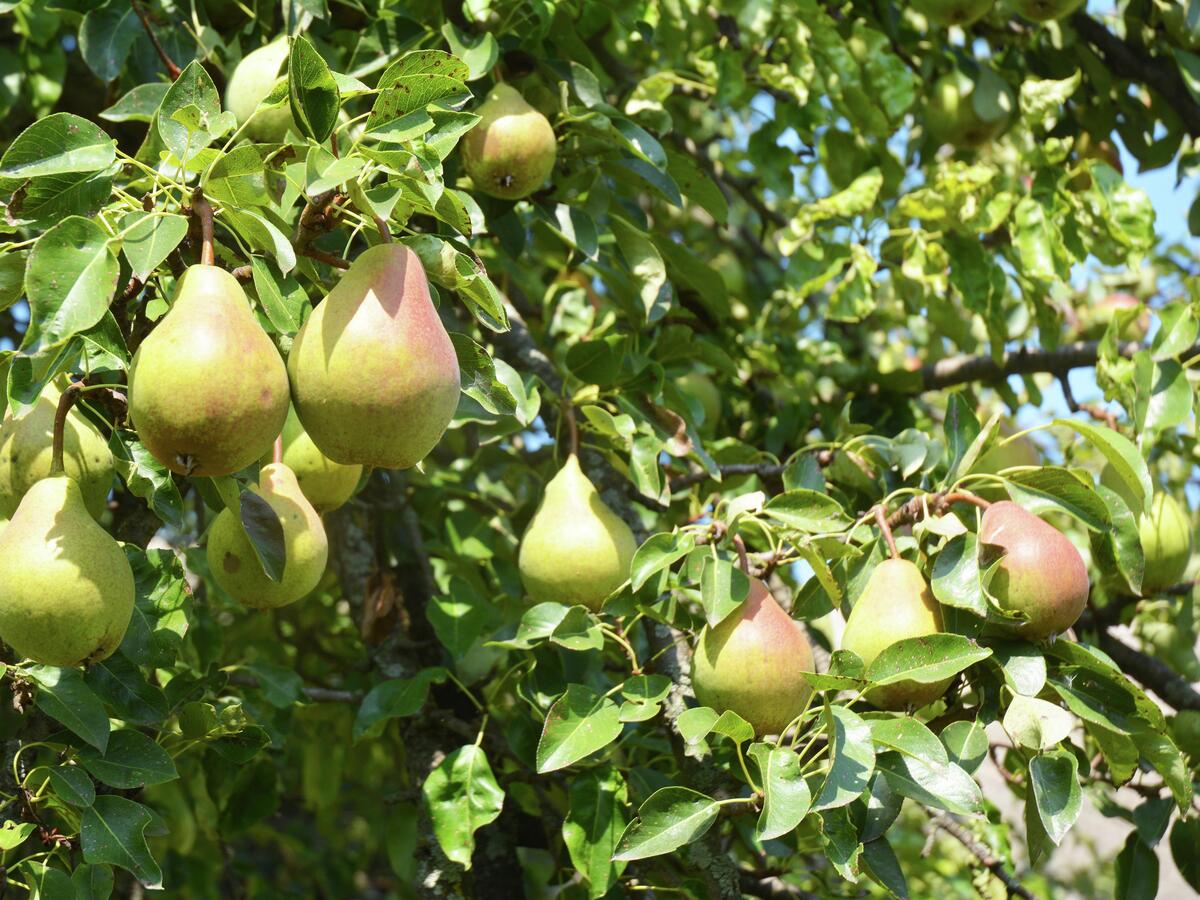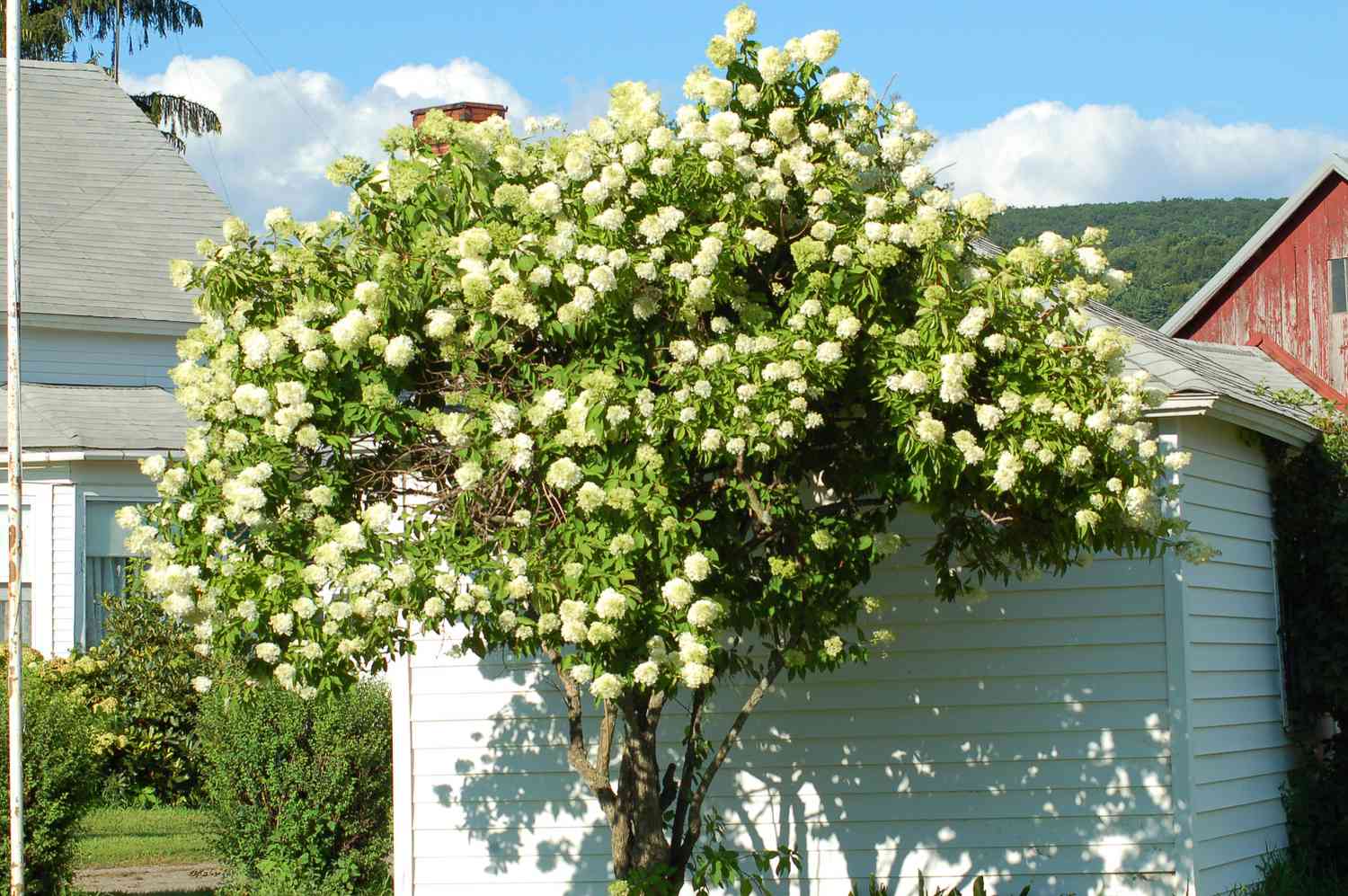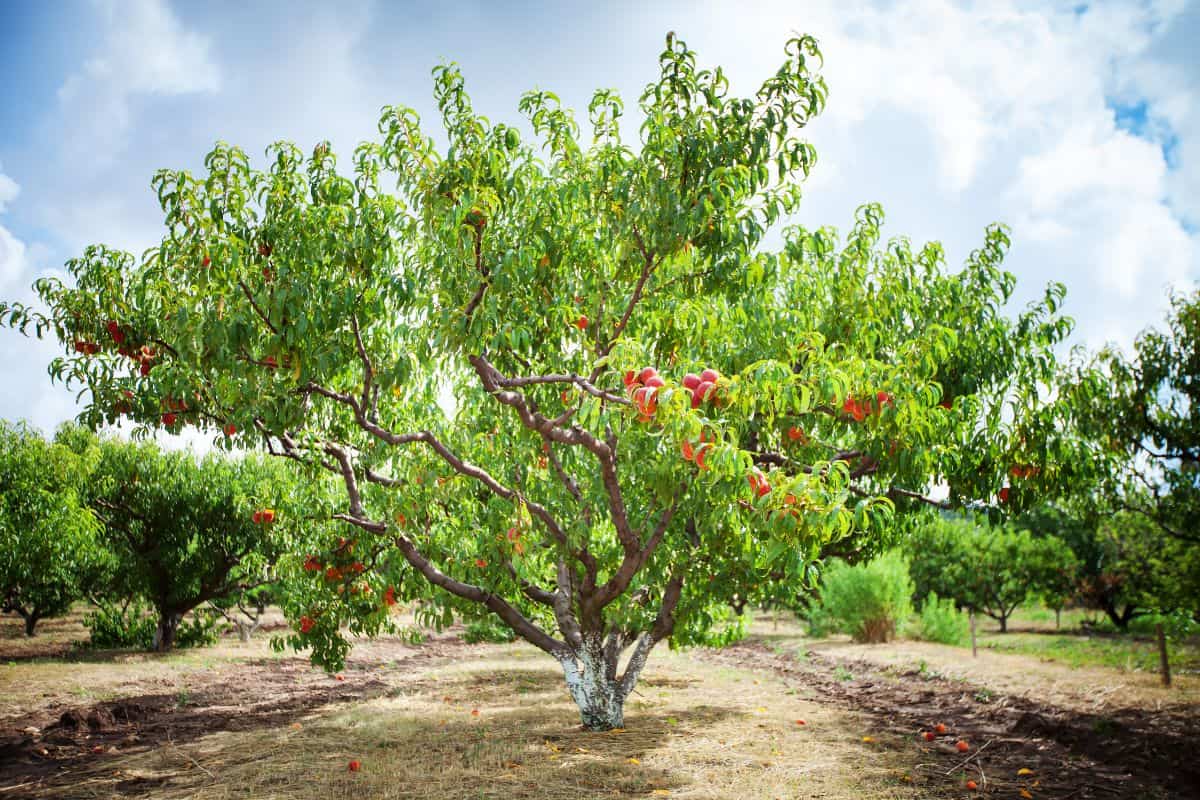Home>Types of Gardening>Edible Gardening>How Big Do Apricot Trees Get


Edible Gardening
How Big Do Apricot Trees Get
Published: November 9, 2023
Learn about edible gardening and find out the ideal size of apricot trees for your garden. Discover how to grow delicious apricots and maximize your harvest with our expert advice.
(Many of the links in this article redirect to a specific reviewed product. Your purchase of these products through affiliate links helps to generate commission for Chicagolandgardening.com, at no extra cost. Learn more)
Table of Contents
Introduction
Edible gardening is gaining popularity among both novice and experienced gardeners, allowing them to take control of their food sources and enjoy the fruits of their labor. One plant that is particularly well-suited for home gardening is the apricot tree. Apricots are not only delicious but also packed with nutrients, making them a delightful addition to any edible garden.
Before embarking on the journey of growing apricot trees, it is important to understand how big these trees can potentially become. Knowing the expected size of an apricot tree is crucial for proper planning and ensuring that it fits into your garden space.
Apricot trees, like most fruit trees, can vary in size depending on several factors. These factors include the variety of apricot tree, the rootstock it is grafted onto, and the growing conditions provided. By understanding these factors and implementing proper pruning and training techniques, you can manage the size of your apricot tree to suit your gardening needs.
In this article, we will explore the factors that affect the size of apricot trees, discuss optimal growing conditions, highlight common apricot tree varieties, and delve into pruning and training techniques for managing tree size. By the end, you’ll have a solid understanding of how big apricot trees can get and how to ensure they thrive in your garden.
Factors Affecting Apricot Tree Size
Several factors influence the size of an apricot tree, including its variety, rootstock, and growing conditions. Understanding these factors will help you determine the expected size of your apricot tree and plan accordingly.
Variety: Different varieties of apricot trees naturally have varying sizes. Some apricot tree varieties are considered dwarf or semi-dwarf, meaning they have been specifically selected or bred to grow to a smaller size. These varieties are ideal for smaller gardens or containers. On the other hand, there are standard-sized apricot tree varieties that can grow larger and require more space.
Rootstock: Apricot trees are often grafted onto rootstocks, which can greatly affect their size. The rootstock acts as the root system of the tree, influencing its overall growth and vigor. Certain rootstocks promote smaller tree sizes, while others encourage larger, more vigorous growth. When selecting an apricot tree, it’s important to consider the rootstock used and its impact on tree size.
Growing Conditions: The growing conditions provided for apricot trees can also influence their size. Like all fruit trees, apricots thrive in specific environmental conditions. Adequate sunlight, well-draining soil, and proper irrigation are essential for healthy tree growth. Trees that receive optimal growing conditions are more likely to reach their maximum size potential.
It’s important to note that while certain factors may impact the size of apricot trees, they generally do not grow to be as large as other fruit trees like apple or pear trees. Apricot trees are typically smaller in stature, making them suitable for smaller gardens or spaces. However, with the right variety selection, rootstock choice, and growing conditions, you can still enjoy a bountiful harvest.
Optimal Growing Conditions
Providing optimal growing conditions is essential for the healthy growth and development of apricot trees. By ensuring that your trees have the right environment, you can help them reach their full potential in terms of size and fruit production.
Sunlight: Apricot trees thrive in full sunlight. They require at least 6 to 8 hours of direct sunlight daily for optimal growth and fruit production. Choose a location in your garden that receives ample sunlight throughout the day, preferably with minimal shade from buildings or other trees.
Soil: Apricot trees prefer well-draining soil that is rich in organic matter. The soil pH should range between 6.0 and 7.5, slightly acidic to neutral. If your soil is heavy or clayey, improve its drainage by adding organic matter like compost or well-rotted manure. This will ensure that excess water does not accumulate around the roots, which can lead to root rot or other issues.
Irrigation: Apricot trees require regular and consistent watering, especially during hot and dry periods. Deep, infrequent watering is ideal for encouraging deep root growth. Water the trees thoroughly, allowing the water to penetrate the soil to a depth of at least 12 inches. Avoid overwatering, as standing water can lead to root problems.
Temperature: Apricot trees thrive in regions with a mild winter and a moderate summer. They require a certain amount of winter chill hours (number of hours below a specific temperature range) to properly set fruit. Check the specific chill hour requirements of the apricot tree variety you choose to ensure they can thrive in your climate.
Wind Protection: Strong winds can damage apricot trees and hinder their growth. If your garden is exposed to high winds, consider planting windbreaks or providing some form of wind protection, such as fences or hedges, to shield the trees.
By providing apricot trees with an ideal growing environment consisting of ample sunlight, well-draining soil, proper irrigation, and adequate wind protection, you will create the perfect conditions for them to grow to their optimal size and produce abundant, flavorful fruit.
Common Apricot Tree Varieties
There are many different varieties of apricot trees available, each with its own unique characteristics. Understanding the common varieties will help you choose the one that is best suited for your growing needs and desired tree size.
Moorpark: Moorpark apricots are known for their large size and rich flavor. They have a vibrant orange-yellow color and a firm yet juicy flesh. Moorpark trees are considered to be standard-sized apricot trees and can reach heights of 15 to 20 feet.
Tilton: Tilton apricots are popular for their excellent flavor and productivity. They have a tart yet sweet taste and are often used for canning and drying. Tilton trees are semi-dwarf, reaching heights of 10 to 12 feet, making them suitable for smaller gardens.
Blenheim: Blenheim apricots, also known as Royal apricots, have a distinctive flavor that is both sweet and tart. They are excellent for fresh eating, baking, and preserves. Blenheim trees are considered standard-sized and can grow up to 25 feet tall.
Harcot: Harcot apricots are a hybrid variety known for their early ripening and juicy, sweet flesh. They are self-fertile, meaning they do not require another apricot tree for cross-pollination. Harcot trees are semi-dwarf and typically reach heights of 8 to 10 feet.
Garden Annie: Garden Annie apricots are prized for their compact size and exceptional fruit quality. This dwarf variety is perfect for container gardening or small garden spaces. Garden Annie trees reach heights of only 4 to 6 feet, making them easily manageable.
These are just a few examples of common apricot tree varieties, but there are many more to choose from. When selecting an apricot tree variety, consider factors such as tree size, flavor preference, pollination requirements, and suitability for your specific growing conditions. By choosing the right variety, you can ensure that your apricot tree grows to the size that is most suitable for your garden space.
Understanding Apricot Tree Growth Habits
Apricot trees have unique growth habits that gardeners should be aware of in order to effectively manage their size and promote healthy growth. Understanding these growth habits will allow you to make informed decisions regarding pruning, training, and overall care for your apricot tree.
Growth Rate: Apricot trees have a moderate growth rate, usually reaching full maturity within 3 to 5 years. During the first few years, the trees focus on establishing their root system and developing a sturdy trunk. As they mature, they will begin to branch out and produce fruit.
Branching Pattern: Apricot trees typically have a branching pattern known as a “central leader.” This means that there is one dominant upright central stem from which lateral branches emerge horizontally at regular intervals. Pruning apricot trees with the central leader system in mind helps maintain a balanced shape and encourages proper airflow and sunlight penetration.
Fruit Spur Development: Apricot trees produce fruit on short, stubby branches called “spurs.” These spurs develop on older wood, usually two or more years old. It’s important to avoid excessive pruning of these older branches, as they contribute to fruit production. Pruning should focus on removing dead, diseased, or overcrowded branches while still preserving the fruiting spurs.
Alternate Bearing: Apricot trees are known for their tendency to exhibit alternate bearing, where they produce a heavy crop one year and a lighter crop the next. This natural fluctuation in fruit production can affect tree size and vigor. To manage alternate bearing, thinning the fruit when there is a heavy crop can help promote healthier tree growth and prevent branches from becoming overly weighed down.
Suckering: Apricot trees are prone to suckering, which refers to the growth of new shoots from the base of the tree. These suckers can sap energy and nutrients from the main tree if left unchecked. Regularly monitoring and removing suckers is important to maintain the health and size of the apricot tree.
By understanding apricot tree growth habits, you can implement proper pruning, training, and maintenance techniques to ensure your tree grows to its desired size and produces abundant, high-quality fruit. Regular observation and care will help you maintain a healthy and productive apricot tree in your garden for years to come.
Pruning and Training Techniques for Managing Tree Size
Pruning and training are essential practices for managing the size of apricot trees and promoting their overall health and productivity. By employing proper pruning techniques, you can control the growth of your apricot tree and ensure it remains a manageable size for your garden.
Pruning Young Trees: When apricot trees are young, it is important to establish a strong framework by pruning to encourage structure and balance. Select a central leader branch to serve as the main trunk, and remove any competing or crossing branches. This will help create an open canopy and prevent overcrowding as the tree matures.
Thinning of Branches: As the apricot tree grows, periodic thinning of branches may be necessary to maintain its size and shape. Remove any dead, diseased, or broken branches, as well as any crowded or crossing branches. This will improve air circulation and sunlight penetration throughout the canopy and reduce the risk of disease and pest infestation.
Heading Back: To control the height and width of your apricot tree, consider heading back the central leader and lateral branches. This involves cutting back the branches to encourage the growth of new, shorter lateral branches. Heading back should be done selectively and gradually to avoid excessive regrowth and shock to the tree.
Renewal Pruning: Over time, some branches on the apricot tree may become unproductive or overly vigorous. Renewal pruning involves removing these branches to stimulate new growth and maintain a balanced structure. Remove one or two of the oldest branches at the base each year to encourage the growth of new, productive branches.
Training Methods: Espalier, a training technique where the branches are trained horizontally along a support structure, can help manage the size of an apricot tree. This method maximizes space utilization and exposes more branches to sunlight, resulting in increased fruit production. Other training methods, such as fan or palmette forms, can also be used to control size and enhance productivity.
It is important to remember that apricot trees require some pruning and training to maintain their size and shape, but excessive pruning can reduce fruit production. Always adhere to proper pruning techniques and avoid removing more than 20-30% of the tree’s canopy in a single pruning session.
Regular, mindful pruning, combined with appropriate training techniques, will help you manage the size of your apricot tree, encourage healthy growth, and ensure optimal fruit production.
Potential Issues with Overgrown Apricot Trees
Allowing apricot trees to become overgrown can lead to various issues that can negatively impact their health and productivity. It is important to be aware of these potential problems and take proactive measures to manage the size of your apricot tree.
Disease and Pest Infestation: Overgrown apricot trees tend to have dense canopies that restrict airflow and sunlight penetration. This creates a favorable environment for disease and pest infestation. Fungal diseases, such as brown rot or powdery mildew, can thrive in moist conditions, while insects, such as aphids or mites, can find shelter and multiply rapidly in crowded branches.
Fruit Quality and Yield: Overgrown trees often produce reduced fruit quality and yield. The lack of sufficient sunlight and airflow can affect fruit ripening, resulting in smaller or poorly flavored apricots. Overcrowded branches can also lead to competition for resources and limited space for fruit development, resulting in diminished yields.
Difficulty in Harvesting: When apricot trees become overgrown, it can be challenging to harvest the fruit. Dense foliage and excessive branch length make it difficult to reach and gather the ripe fruit. This can lead to missed or damaged fruit and make the overall harvesting process more time-consuming and labor-intensive.
Structural Integrity: Overgrown apricot trees may have weakened structural integrity. The weight of the branches can cause them to bend or break, especially during heavy fruiting seasons or strong winds. Weak branches can pose a safety hazard to both the tree and surrounding structures or gardens.
Reduced Tree Lifespan: Over time, an overgrown apricot tree may have a shorter lifespan. The increased stress on the tree from overcrowding, reduced sunlight, and increased susceptibility to diseases and pests can weaken its overall health. This can lead to a decline in productivity and eventually result in the need for tree removal.
To avoid these potential issues, regular pruning and training are essential. By managing the size of your apricot tree and maintaining an open canopy, you can improve air circulation, sunlight penetration, and reduce the risk of disease and pest infestation. Pruning also helps increase fruit quality, yield, and facilitates easier harvesting.
Remember to follow proper pruning techniques and seek guidance if you are unsure. Regular monitoring and ongoing maintenance will ensure that your apricot tree remains healthy, productive, and a beautiful addition to your edible garden.
Conclusion
Apricot trees are a wonderful addition to any edible garden, providing delicious, nutritious fruit. Understanding how big apricot trees can get and implementing strategies to manage their size is crucial for successful cultivation. By considering factors such as variety, rootstock, and growing conditions, you can choose the right apricot tree that fits your garden space.
Optimal growing conditions, including ample sunlight, well-draining soil, and proper irrigation, are essential for apricot tree health and size management. Choosing the right variety that suits your preferences and climate can also contribute to a successful harvest.
Understanding apricot tree growth habits, such as growth rate, branching pattern, fruit spur development, and alternate bearing, guides us in implementing appropriate pruning and training techniques. By selectively pruning young trees, thinning branches, and practicing heading back and renewal pruning, we can ensure that apricot trees maintain a manageable size while promoting optimal growth and fruit production.
Overgrown apricot trees can lead to issues such as disease and pest infestation, reduced fruit quality and yield, difficulty in harvesting, compromised structural integrity, and a shortened lifespan. Regular pruning and training help mitigate these issues and maintain the health, vitality, and productivity of the tree.
In conclusion, knowing how to manage the size of apricot trees through appropriate pruning and training techniques is essential for the successful cultivation of these delightful fruit-bearing trees. With proper care and attention, you can enjoy the beauty of a well-maintained apricot tree and savor the bountiful harvest of delicious apricots straight from your own garden.










